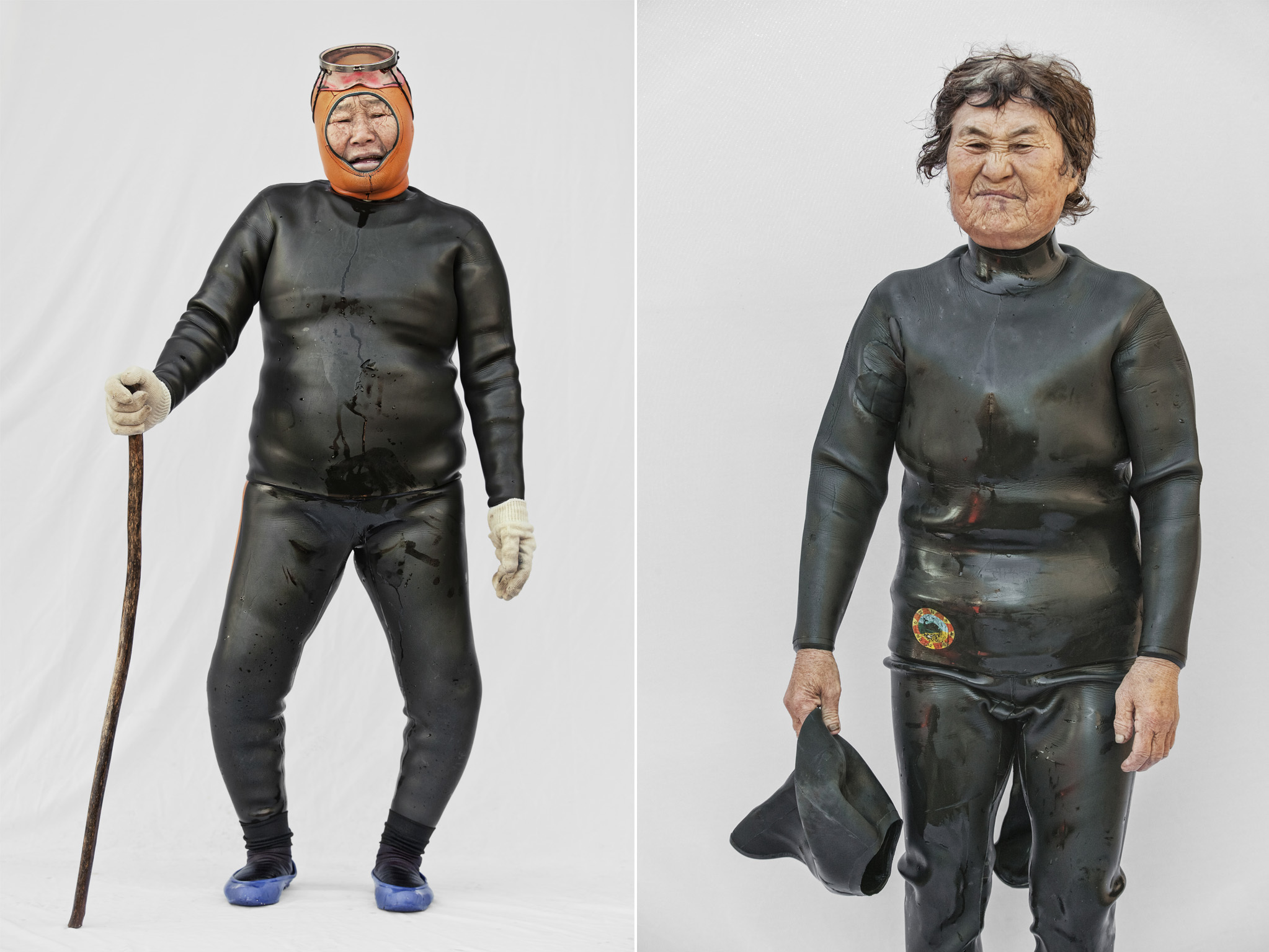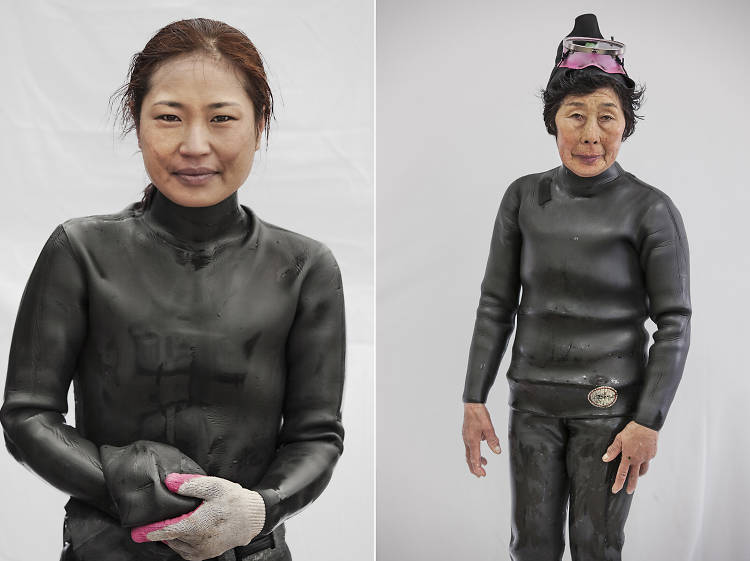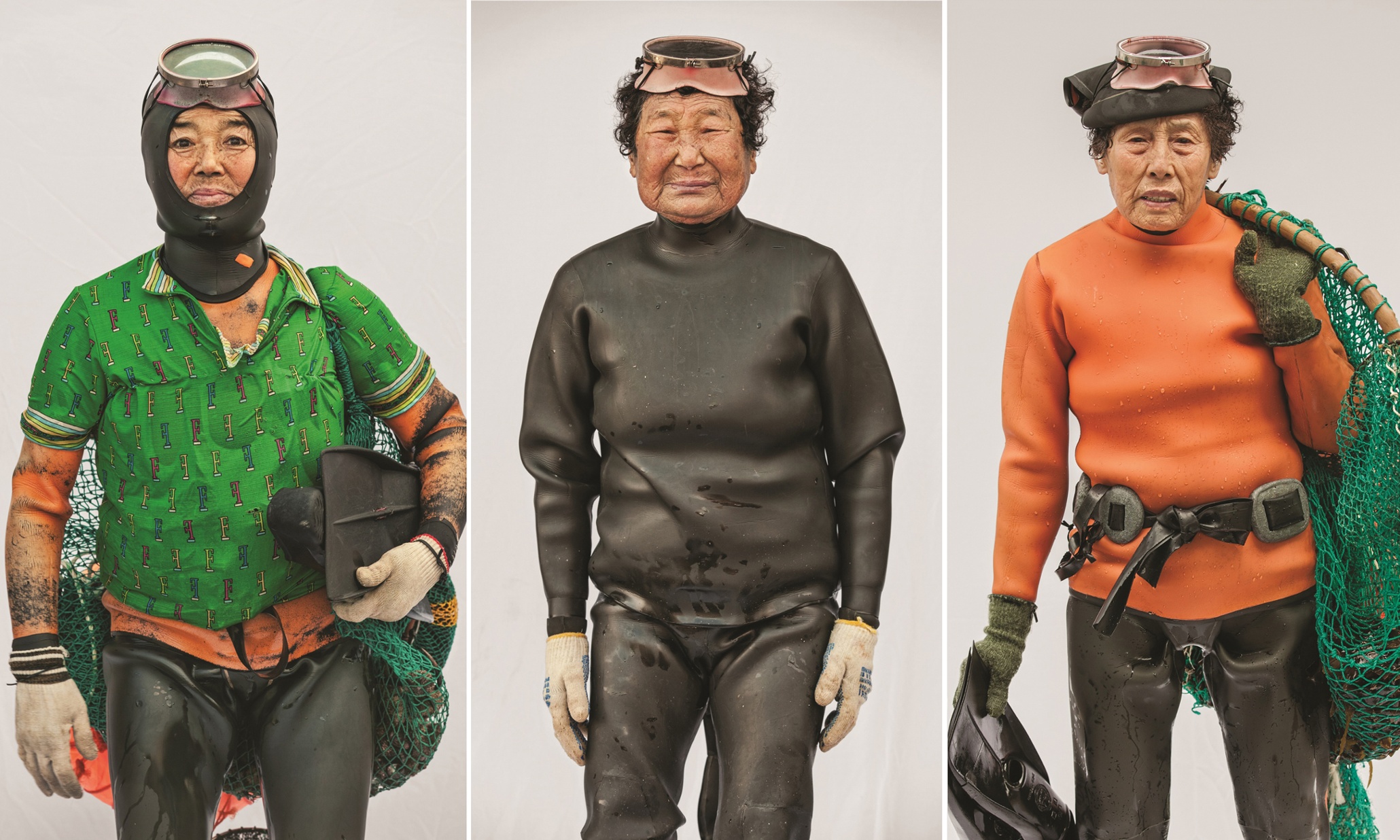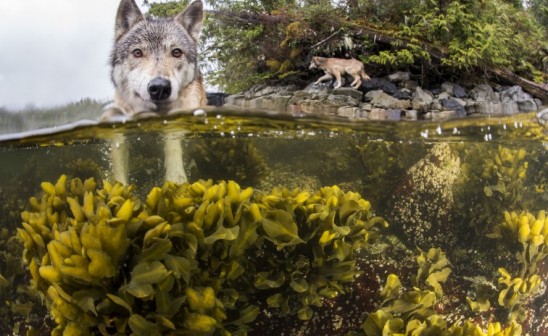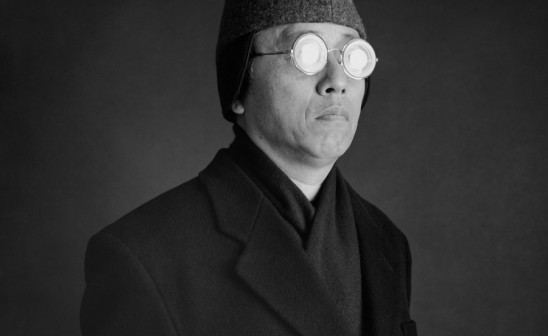They are the Mothers of the Sea and Mother Sea herself. They spend more than 50 years of their life in the ocean, diving more 100 times a day.
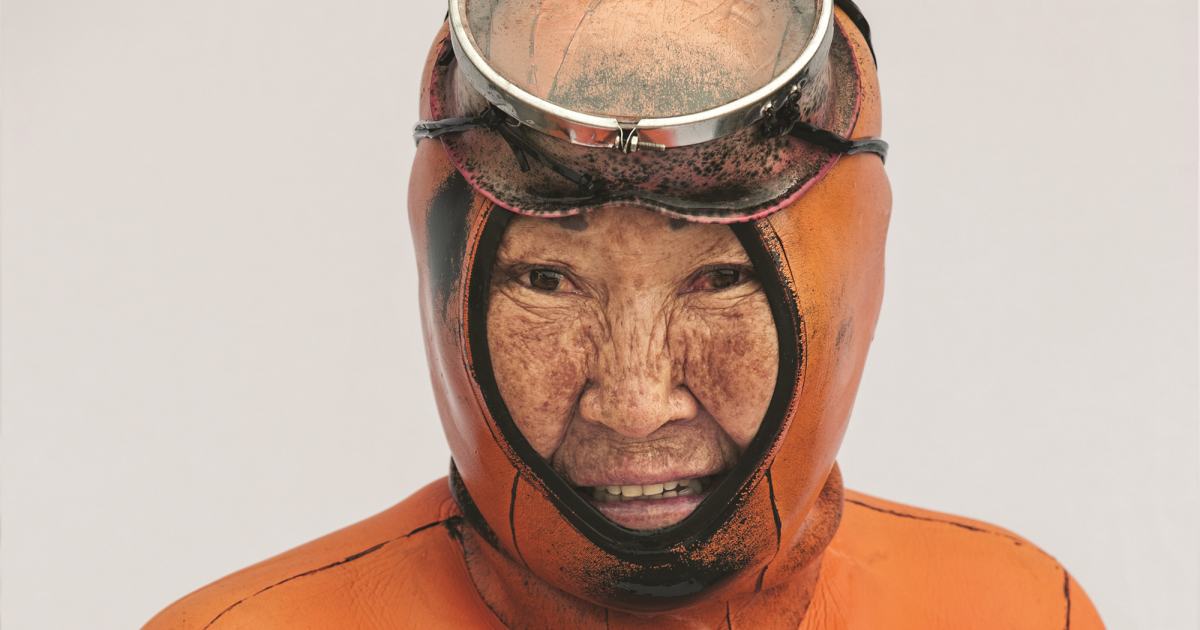
For more than 1,700 years, haenyeo have been diving in the sea, harvesting shellfish and seaweed. In the Korean province of Jeju, sea women dive up to ten metres holding their breath for over two minutes, with no breathing equipment. Between 2012 and 2014, photographer Hyung S. Kim regularly went to Jeju to document the haenyeo. The profession is practiced today by a majority of women in their 60s and older, who dive all year round, wearing old-fashioned headlight-shaped scuba mask. Persuading divers to have their pictures taken as they emerged from the water, Kim's portraits show wrinkled faces and grey hair personalities who are likely be the last generation of haenyeo. We met up with Kim to discuss these women's stories, often described as sea warriors, risking their life scouring the ocean floor.
Hi Hyung, could you tell us more about your background?
I was born in Seoul and I still live in Seoul today. I own a photo studio called ‘Studio Zip’. I have been working on portraits for the last 20 years. Four years ago, I decided to focus on a personal project and created my very first portrait series. That's how "Haenyeo" came to life.
'Haenyeo' was born in Jeju Island in 2012, photographing South Korean female divers. How did you come across these women?
Four years ago, while I was traveling on Jeju Island, I came across the Haenyeo. They had just finished working and were coming out of the water. I had heard about the Haenyeo but that day was the first time I saw a haenyeo with my own eyes. Seeing them right after all their extremely hard work, I felt very moved and I wanted to capture that moment.
How did you persuade the divers to have their pictures taken as they emerged from the water?
Many times I tried to photograph them but the women were not very open to it. Most of the Haenyeo were not co-operative with any kind of photography projects, or interviews, because they are just tired. This was a very difficult process, as they were not used to being photographed, especially against an artificially created background, so they would often avoid me entirely. Mostly, they don’t think their work is something to be praised. I asked them before they went into the water and then waited for 4-5 hours to photograph them. Finally, it was worth it. From then, I have been lucky to photograph them many times and I now know them very well. I also learnt their names, and about their family members. Today, when they see me, they are very kind to me, like my own grand mother would be.
What kind of relationship do these women have with the sea?
They've been working as Haenyeo, or sea women, most of their life. They usually start working at a young age, when they are 13 years old. They spend more than 50 years of their life in the ocean. Sea women dive more 100 times a day. They risk their life at work, but they do it for their family.
These women have made their living harvesting seafood, by hand, from the ocean floor. With no breathing equipment, they are able to stay under water for long periods of time and dive to great depths. How are they considered in their village?
30 years ago, Haenyeo were considered to be at a lower rung of the social structure. Because Jeju Island is a volcanic island, it is very tough to make a living on the ground. At the time, catching fish and other seafood was the main means to live better and make money. It was a tough life but it remained the only choice they had to make a living. It's never been leisure for them. In March 2014, the government requested the UNESCO to add Haenyeo to its Intangible Cultural Heritage list. Over the past two years, people have begun to respect them and see them as a great part of the country's cultural heritage. However, old Haenyeos are not used to that situation yet. That's why they are not very happy to be photographed. Also, many people visit Jeju to see them as a touristic scene. There's even the Haenyeo Museum in Jeju today, which bothers them a lot. Sea women just want to continue their everyday job.
Can you tell us more about what it feels to meet such unique female divers?
I learned so much thanks to them, and thanks to photography. The Haenyo are skilled at free diving to depths of 60 feet. After they come out from diving, they make long breathing sounds. That's the sound of life that you cannot hear anywhere else. This is the confirmation that they survived the dive. This sound is both very beautiful and also very sad. Most of the Haenyoes have lived underwater most of their life, so they are exposed to many dangers from the diving. They suffer various health problems, such as hearing loss and chronic headaches. They continually take medication to keep diving, and overuse analgesics. It doesn't stop them for it is the only life they know - they are the Mothers of the Sea and Mother Sea herself.
How do they cope knowing they are the last generation of sea women?
They have been working as Haenyeo for 3 or 4 generations and feel certain they will be the last generation. Their kids don’t work as haenyeo. Their daughters, who grew up in a modern technological society of relative affluence, are not interested. The sea women don’t want any of their kids to work as haenyeo either, because it’s such a hard work!
The resulting portraits are very natural: Tired faces full of strength. What were your intentions behind these pictures?
There was a real difference between how they looked before and after diving. After diving, Haenyeos are extremely exhausted. It was at this exact moment I found, and captured, their strength and power. During every dive, they fight for their life and I wanted to capture that moment of strength. I wanted to show their beauty to the world.
Do you keep going to Jeju Island today?
I travel down to Jeju as often as I can. There're still some Haenyeos I want to photograph. And as long as I can work, I will continue to photograph them.
All photos Copyright ⓒ 2015 by Hyung S. Kim



